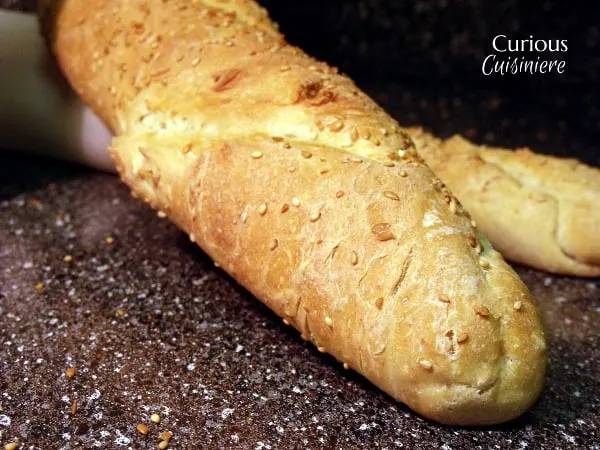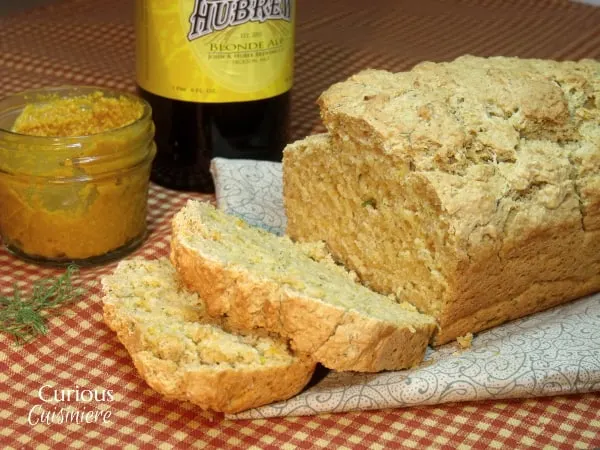What is yeast? Should I use baking soda or baking powder? What makes bread rise? We’ll tackle some of these hot topics as we explore yeast and other leavening agents.
 What makes bread rise?
What makes bread rise?
Have you ever wondered why some recipes call for baking soda, while others call for baking powder?
Or, why some breads use yeast and others use beer?
Whether you’re an avid baker or just starting out, these questions can give you pause. So, we wanted to take some time to look into what makes bread rise and cake fluffy: the Leavening Agent.
What are leavening agents?
Leavening agents make bread and other baked good rise by causing a foaming action that traps air bubbles in the food as it cooks. The trapped air gives the final product a light and fluffy texture.
There are three types of leavening agents.
Chemical Leavening Agents
Chemical Leavening Agents work by releasing carbon dioxide as they react with each other, moisture, or heat.
What is Baking Soda?
Baking Soda (sodium bicarbonate) reacts with acid. The reaction causes bubbles of carbon dioxide to form throughout the food, expanding it.
Since baking soda reacts with acid, it is used when the food contains an acidic ingredient, like lemon juice, buttermilk, vinegar, cocoa, honey or cream of tartar, such as Irish Soda Bread, Red Velvet Cake and cookies.
Roughly 1/4 tsp of baking soda is needed to leaven a cup of flour if a significant acidic ingredient is present.
What is Baking Powder?
Baking Powder is a leavening agent made up of of baking soda and an acidic salt that is activated with heat, typically cream of tartar. As baking powder dissolves in liquid, the baking soda reacts with the acidic cream of tartar to create carbon dioxide gas bubbles that are then trapped by the dough around them.
Double-Acting Baking Powder is the most common form of baking powder and has two or more acids, one reacts to create carbon dioxide at room temperature, while the other will not react until it is heated.
Baking powder is used in recipes that are not acidic enough for baking soda alone to produce bubbles. It can be found in batter ‘breads’ like pancakes, waffles, biscuits, and scones.
You need roughly 1 tsp of baking powder per cup of flour in the recipe you need leavened.
You can also make your own baking powder by mixing two parts of cream of tartar to one of baking soda. (So, 1/2 tsp cream of tartar and 1/4 tsp baking soda will give you 3/4 tsp of baking powder.)
Baking Soda or Baking Powder?
Some recipes, particularly quick breads and muffins like our Rum Raisin Bread, call for both baking soda and baking powder.
This is because the food contains a small amount of acid, but not enough to sustain a good rise. The baking soda will react with and neutralizes the small amount of acid quickly, while the baking powder sustains the rise as the food cooks.
Biological Leavening Agents
Biological Leavening Agents work by fermenting the sugars in the food to create carbon dioxide. Fermentation produces additional flavor, such as the sour flavor in sourdough bread.
What is yeast?
Yeast is the most widely used biological leavening agent.
As yeast grows, it converts sugar food into alcohol and carbon dioxide through fermentation.
Yeast should be stored in a cool, dry place, but should always be at room temperature before being dissolved in liquid.
Active Dry Yeast is comprised of tiny, dehydrated granules. When mixed with warm liquid (105-110F), the cells become hydrated and active. One 1/4 oz package of active dry yeast is equal to roughly 2 1/4 tsp or 1 cake of compressed, fresh yeast.
Instant Yeast is a form of dry yeast, similar to active dry, but with slightly smaller granules. It doesn’t need to be pre-dissolved to work properly, so it can be mixed with the flour before liquid is added.
Compressed Fresh Yeast comes in small, square cakes and is moist and perishable. It must be refrigerated and used within a week or two of opening.
(Check out our collection of yeast bread recipes HERE.)
Beer, Buttermilk, and Sourdough
Other biological leavening agents include unpasteurized beer, sourdough starter, buttermilk, kefir and yogurt. The last three can often be used interchangeably.
These leavening agents are typically chosen for the flavor they add to the food, and are often used in combination with baking powder to help sustain the leavening effect.
Mechanical Leavening Agents
We’ve been through a lot of leavening agents, and it might seem like we’ve covered them all, but we’re not done yet!
Mechanical Leavening Agents work by releasing gas that is already trapped in the product.
Examples of mechanical leavening agents include whipped cream and beaten egg whites.
Whipping heavy cream or egg whites traps air between thin layers of egg whites or cream fat in a foam-like substance. The layers are elastic, so, when the food is cooked and the air expands, the whites or fat stretches and sets in its expanded position.
This the the method used in making sponge cakes and souffles.
So, the next time you take a bite of that airy cake, fluffy muffin or soft bread, you can thank the leavening agent for your mouth’s happiness.
If you liked this recipe, here are some similar dishes you may enjoy!

Sarah is one of Curious Cuisiniere’s founding duo. Her love for cultural cuisines was instilled early by her French Canadian Grandmother. Her experience in the kitchen and in recipe development comes from years working in professional kitchens. She has traveled extensively and enjoys bringing the flavors of her travels back to create easy-to-make recipes.
 What makes bread rise?
What makes bread rise?








Shiela
Monday 28th of September 2020
Thank you so much!
Sarah Ozimek
Monday 28th of September 2020
You are welcome!
Dr. Raghav N Bhatnagar
Wednesday 2nd of May 2018
Thank you for clarifying the difference between Baking powder and Baking soda and the process of leavening agents.
Sarah Ozimek
Friday 4th of May 2018
You're welcome! Happy baking!
Rommel Galindes
Wednesday 21st of March 2018
this article was worth reading it almost covered all the information needed by one inquisitve chef..thanks to your generousity for knowledge may the Lord God blessed your website..
Chi Sutherland
Friday 6th of December 2019
Yes, thank you. Very helpful information!
Sarah Ozimek
Wednesday 21st of March 2018
Thank you Rommel! Glad you found what you needed!
Jane
Wednesday 25th of May 2016
Thank you for all this information about leavening agents :)
Sarah Ozimek
Wednesday 25th of May 2016
You are welcome Jane! Hopefully the information is helpful for you!